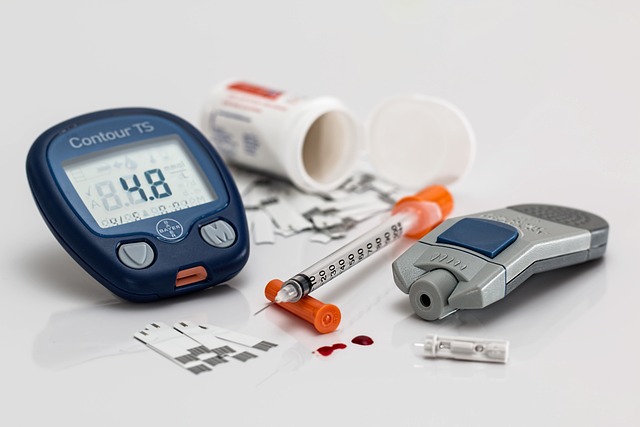Uncontrolled diabetes can silently wreak havoc on your body, and one of its most alarming effects is on your vision. High blood sugar levels can damage delicate blood vessels in the eyes, leading to conditions like diabetic retinopathy, cataracts, and glaucoma. This article explores how diabetes fogs your vision, the critical blood glucose levels that trigger these complications, how to recognize the signs, and the most effective treatments to safeguard your eyesight. If you or a loved one has diabetes, understanding these risks is crucial for maintaining clear vision and overall health.
What Causes Vision Problems in Uncontrolled Diabetes?
Diabetes affects vision primarily through damage to the blood vessels in the retina, the light-sensitive layer at the back of the eye. When blood glucose levels remain consistently high—typically above 180 mg/dL (10 mmol/L) for extended periods—these vessels can weaken, leak, or become blocked. This condition, known as diabetic retinopathy, is the leading cause of blindness in adults aged 20–74. Additionally, high blood sugar can cause:
- Swelling in the macula (macular edema), impairing central vision.
- Cataracts, clouding the eye’s lens earlier than in non-diabetics.
- Glaucoma, increased pressure in the eye that damages the optic nerve.
Prolonged hyperglycemia (blood glucose above 200 mg/dL or HbA1c above 7%) accelerates these complications, often without noticeable symptoms in the early stages.
How Does a Normal Person Know Their Eyes Are Affected?
Vision changes from diabetes can be subtle, making regular eye exams critical. Here are key signs to watch for:
- Blurry or wavy vision: Fluctuating blood sugar can cause the eye’s lens to swell, altering focus.
- Floaters or dark spots: These may indicate bleeding in the retina.
- Difficulty seeing at night: Early diabetic retinopathy affects low-light vision.
- Color vision changes: Faded or washed-out colors can signal retinal damage.
- Sudden vision loss: This is a medical emergency and may indicate advanced complications.
If you experience any of these symptoms, consult an eye care specialist immediately. Even without symptoms, the American Diabetes Association recommends annual dilated eye exams for anyone with diabetes to detect issues early.
Critical Blood Glucose Levels and Eye Damage
Maintaining blood glucose within the target range—80–130 mg/dL (4.4–7.2 mmol/L) before meals and below 180 mg/dL (10 mmol/L) two hours after meals—reduces the risk of eye complications. Chronic levels above 200 mg/dL (11.1 mmol/L) or an HbA1c above 7% significantly increase the likelihood of diabetic retinopathy and other vision issues. Regular monitoring with a glucometer or continuous glucose monitor (CGM) helps track these levels and prevent damage.
Treatment Options for Diabetes-Related Vision Problems
Early detection and management are key to preserving vision. Treatments include:
- Blood Sugar Control: Tight glucose management through diet, exercise, and medications (e.g., insulin or metformin) can slow or prevent further damage. Work with an endocrinologist to keep HbA1c below 7%.
- Laser Therapy: For diabetic retinopathy, laser photocoagulation seals leaking blood vessels or shrinks abnormal ones.
- Anti-VEGF Injections: Drugs like ranibizumab (Lucentis) reduce swelling in macular edema and block abnormal vessel growth.
- Surgery: Vitrectomy removes blood or scar tissue from the eye in advanced retinopathy cases. Cataract surgery replaces clouded lenses.
- Lifestyle Changes: Quit smoking, manage blood pressure (target below 130/80 mmHg), and control cholesterol to protect eye health.
Prevention Tips for Clear Vision
- Monitor blood sugar daily and aim for target ranges.
- Schedule annual eye exams with an ophthalmologist.
- Eat a balanced diet rich in leafy greens, omega-3s, and low-glycemic foods.
- Exercise regularly to improve circulation and glucose control.
- Follow your doctor’s advice on medications and insulin therapy.
When to Seek Help
If you notice sudden vision changes, persistent blurriness, or floaters, contact an eye specialist immediately. For those newly diagnosed with diabetes, schedule a comprehensive eye exam to establish a baseline. Early intervention can prevent irreversible damage.
Conclusion
Uncontrolled diabetes can fog your vision, but proactive management can keep your eyes healthy. By maintaining blood glucose below 180 mg/dL, recognizing warning signs, and seeking timely treatment, you can protect your sight. Regular eye exams and a healthy lifestyle are your best defenses against diabetes-related vision loss. Take control today to see a clearer tomorrow.

Leave a Reply